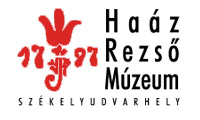Kovács Petronella (szerk.): Isis - Erdélyi magyar restaurátor füzetek 1. (Székelyudvarhely, 2001)
T. Bruder Katalin: Kerámiarestaurálás I.
Dr. Márta JÁRÓ Preventive conservation in museum exhibitions and storages Keeping relative humidity and temperature on the appropriate level and an "art object friendly" illumination in the environment of the art object can ensure a long life and stabile condition to the objects. The most important factor to be considered during the establishment of an environment - determination of humidity and temperature - is where the object came from to the museum. Materials, especially organic ones, try to accommodate themselves to the new situation when removed from their usual environment. If this change is great, the process is very fast and deteriorates the object. In the case of combined objects (made from different materials), the parameters must be adjusted to the most sensitive component. The relative humidity must be known before setting the appropriate level of humidity. This can be measured with instruments that do not need authentication (calibration) (the most common one is the Assman psychrometer) or with instruments that need calibration (hygrometer, thermohygrometer, hygrograph, thermohygrograph). The optimal RH can be set in exhibition spaces and storages using various instruments (vaporiser, air dehumidifier, central air conditioning). If these instruments cannot be obtained, the humidity can simply be raised in close range with placing vessels full of water in places where there are no art objects. Reducing temperature can also help since it increases relative humidity. The humidity inside exhibition showcases, storage boxes and transporting containers can be set with the position of buffers (absorbent materials: wood, paper, textile) or silica gel the most commonly applied buffer material in museum practice (e.g. the Art-Sorb granulate of Japanese make). This tends to reach an equilibrium with the environment, so it can be used both for keeping humidity balanced and, being dried, for air dehumidification. Within the climatic circumstances of the Carpathian Basin, temperature fluctuation moves within a museum building between 1-2 °C (unheated storage in the winter) and 40 °C (sunlit space in the summer heat). The rise of temperature can cause first of all physical changes (thermal expansion), but it can also lead to the emulsion of photo negatives and the modification of the physical state of bituminous binding materials. It can accelerate chemical reactions, and the ageing of binding varnishes and plastics used by restorers. Art objects, especially those made of organic materials, should not be stored or exhibited close to a heat source, they should not be exposed to direct sunlight and neither a spot-lamp or a luminescent armature should be placed in their vicinity. The objects can be protected from sunlight with heat reflecting foils placed on the windows, which, depending on their type, can also screen the harmful UV radiation. The object must also be protected against air pollution of solid and gas state with placing them in show-cases that can firmly be closed and with carefully chosen exhibition installation. Often the decomposed materials of the inappropriately chosen exhibition facilities and depository shelves deteriorate the objects. From the materials of art objects, paper, textile, painted leather and fur are the most sensitive to light, wood, painted wood, canvas paintings, plastics, bone and ivory are medium sensitive, while ceramics and glass are the less sensitive. Aspects of art object protection must be placed in the focus at choosing the illumination of the art objects. Protection against UV radiation is usually solved with screens, foils applied on glass, and the selection of lamps or special light sources. Neon light contains a lot of UV rays so it is not recommended even in restorer's workshops. To screen IR radiation, drapes, reluxa (louvered) shutters and bulbs with cold mirrors can be applied. Illumination for short periods can also protect against the deteriorating effects of light. Dr. Márta Járó Chemist Magyar Nemzeti Múzeum Docent in University of Fine Arts of Hungary Dr. András MORGÓS Current disinfection methods of art objects Disinfection as a defensive treatment can be preventive, arrestive or combined in relation to the time of deterioration. Preventive conservation can be solved with the regulation of humidity and temperature, various architectural means or treatments with preventive protective agents. Arrestive protection can be done with liquids, fumi, physical or biological methods. The advantage of fumigation is that gas can penetrate wood easily, fast and deep. From among the reactive gases, hydrogen cyanide (HCN) was first used in the disinfection of wood since it had good disinfectant properties in a short time. Its drawback is that in a humid environment it takes a long time until it leaves the objects and it reacts with metals and even precious metals. At present it is rarely used. The disadvantage of methyl bromide is that parallelly to the development of an ill-smelling product it reacts with some organic materials (e.g. leather and rubber), corrodes polished metal surfaces and can change the colour of some pigments. In reaction to phosphine (phosphorus hydrogen) copper and its alloys can blacken, gold and silver objects of low precious metal content can discolour, the colour of paints with copper components can change. The highly disinfectant ethylene oxide creates double bonds between the cellulose chains of materials containing cellulose, increasing their rigidity. It hardens leather and 94
